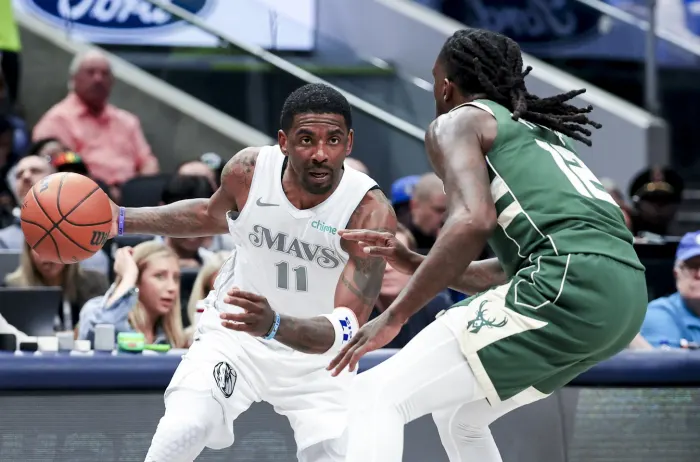The Dallas Mavericks must do some serious self-reflection after Kyrie Irving suffered a season-ending ACL tear—an injury that could derail the franchise’s plans for the next 18 months.
The team took a massive gamble this season, opting to trade away 25-year-old MVP-caliber star Luka Doncic in exchange for 31-year-old Anthony Davis, who has a history of injuries. The hope was to contend for a championship within the next two seasons, but with Irving now sidelined for the rest of the season, their title aspirations seem more distant than ever.
Given the typical 9-12 month recovery period for an ACL tear, Irving is unlikely to return before most of next season is over. Many fans who witnessed his injury immediately suspected it would be a season-ending blow, especially considering the immense workload he has shouldered this year.
Before Doncic was traded, Irving was already carrying the bulk of the team’s guard production due to Doncic’s absence with an injury.
Since Doncic’s departure, Irving has averaged 27.8 points, 5.9 rebounds, and 4.2 assists in 39.4 minutes per game over nine appearances.
Few may remember that Irving played through most of January 2025 with a bulging disc in his back, unable to take time off to heal because the Mavericks relied so heavily on his contributions.
With Irving logging extensive minutes in recent weeks, many are now debating whether his injury was a direct result of the strain placed on his body.
“Kyrie tearing his ACL wasn’t inevitable, but it wasn’t unimaginable either. Trading away a generational talent in his 20s for a 31-year-old with a significant injury history, then driving your 32-year-old star into the ground despite his own injury history is…extremely confusing,” said Rachel Nichols in response to the injury after Tim Cato shared Irving’s post-trade stats.
This injury could have long-term implications for Irving’s career. At 32, he is expected to miss a full year of basketball, and unless the Mavericks are in playoff contention by next March, he may not return until the 2026-27 season. By then, he’ll be 35 and could struggle to regain the explosive movement that has defined his game.
The injury could also impact his financial future. Irving was set to become a free agent in 2025 after declining a $43.9 million player option, with many expecting him to secure a max contract extension—especially if he continued his All-NBA-caliber play. Now, with the injury clouding his future, it’s uncertain whether teams will offer him the lucrative deal he was poised to receive.
Irving is now likely to opt into his player option and attempt a return next season with a competitive Mavericks squad. The team, featuring players like Anthony Davis, still hopes to remain in the playoff picture, and if Irving can contribute to a postseason push, he could work his way back into a major contract extension.
However, the odds are against him. Even younger players have required extended time to recover from ACL injuries—Jamal Murray, for example, tore his ACL during the 2020-21 season and didn’t return until midway through the 2022-23 season, which ended with him winning a championship with the Denver Nuggets.
That would be the dream scenario for Irving, but for now, it appears he is bearing the consequences of the Mavericks’ high-risk decisions this season.
